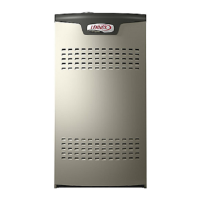
Do you have a question about the Lennox SL280UHNV Series and is the answer not in the manual?
| Model | SL280UHNV Series |
|---|---|
| Type | Gas Furnace |
| Efficiency Rating | Up to 80% AFUE |
| Blower Type | Variable Speed |
| Fuel Type | Natural Gas or Propane |
| Stages | Two-Stage |
| Heating Capacity | 44, 000-132, 000 BTU/h |
| Cabinet Type | Fully insulated |
Details the control box, its components, and their functions for furnace operation.
Outlines essential precautions to prevent damage to electronic components from electrostatic discharge.
Explains the function of the diagnostic LED and push button for monitoring and troubleshooting furnace status.
Describes various diagnostic modes like Error Code Recall, Flame Signal, and Unit Capacity/Size selection.
Provides steps to address issues when the thermostat does not recognize a connected device, leading to soft disable.
Details DIP switch settings for thermostat selection and heating blower-off delay adjustments.
Explains DIP switch settings for adjusting indoor blower speed during cooling mode operation.
Provides steps to diagnose and resolve issues related to the indoor blower motor's performance.
Details tests to check motor windings for resistance and continuity to identify faults.
Explains the SureLight® ignitor's function, voltage requirements, and how to check its resistance.
Describes the flame sensor's role in detecting flame and how to check its signal strength.
Covers the redundant gas valve, its connections, and safety shut-off functions.
Explains the thermal switch's role in shutting down the unit if excessive temperatures are detected.
Details burner settings, orifice matching, and replacement procedures.
Describes the primary limit switch's function in preventing overheating and its automatic reset behavior.
Lists essential checks for wiring, voltage, and connections before starting the unit.
Provides step-by-step instructions for safely initiating the furnace's heating operation.
Covers CAUTION and WARNINGs regarding gas piping installation, torque, and material.
Emphasizes leak detection methods and precautions, advising against open flames.
Details the procedure for accurately measuring manifold pressure for correct gas flow.
Outlines acceptable CO levels for natural gas combustion and firing rate monitoring.
Explains how to check gas flow rate using a gas meter clocking method.
Describes blower operation based on thermostat settings and how to adjust blower speed.
Explains that temperature rise depends on input, blower speed, horsepower, and static pressure.
Details the procedure for measuring external static pressure in heating and cooling modes.
Lists checks for wiring, motor, gas connections, filters, burners, and heat exchanger.
Provides detailed steps for cleaning the heat exchanger and burners, including steam cleaning.
Shows wiring diagrams for various configurations and optional accessories.
Describes the heating sequence of operation when using a two-stage thermostat.
Details the heating sequence of operation when using a single-stage thermostat.
Explains how DIP switches and on-board links are used to configure wiring for various thermostat applications.
Illustrates the step-by-step process of the furnace's heating sequence and potential issues.
Details the sequence of operations for the furnace during cooling mode.
Outlines the sequence of operation for when the fan is set to run continuously.
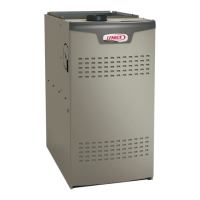
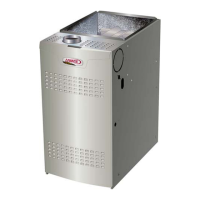
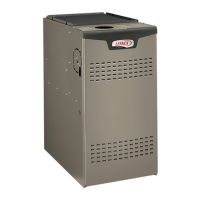
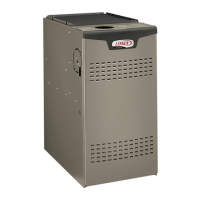


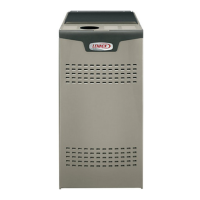
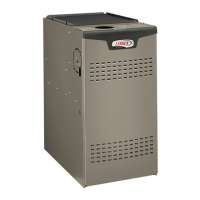

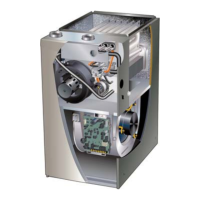
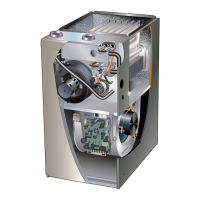
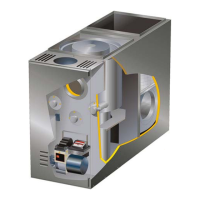
